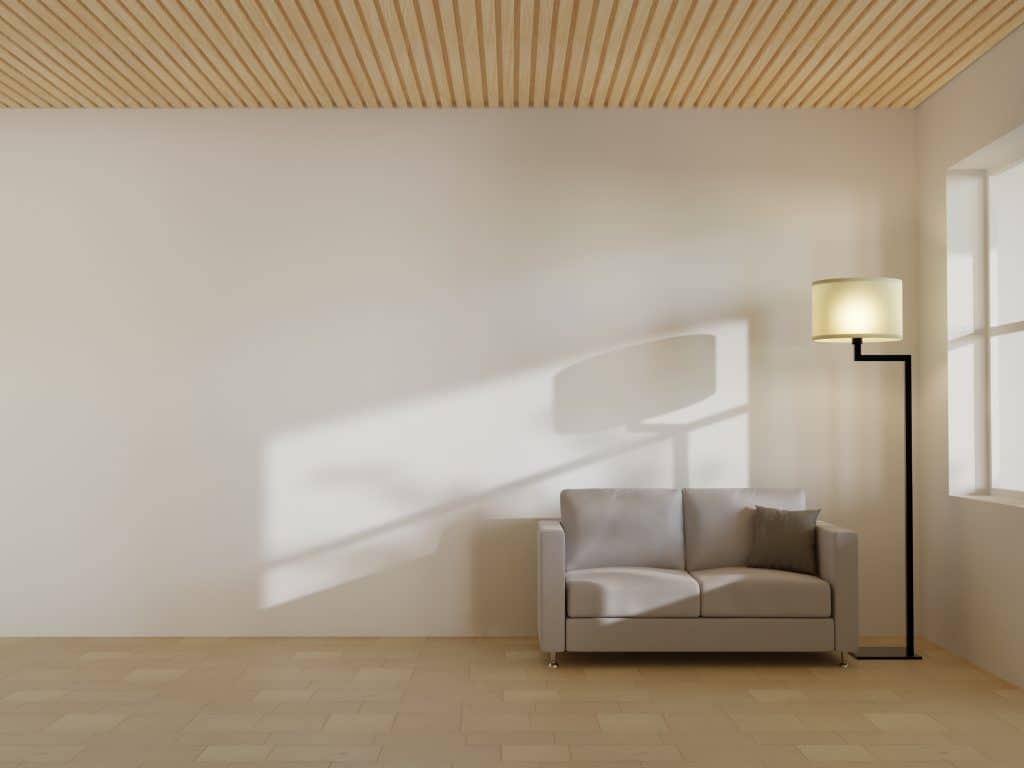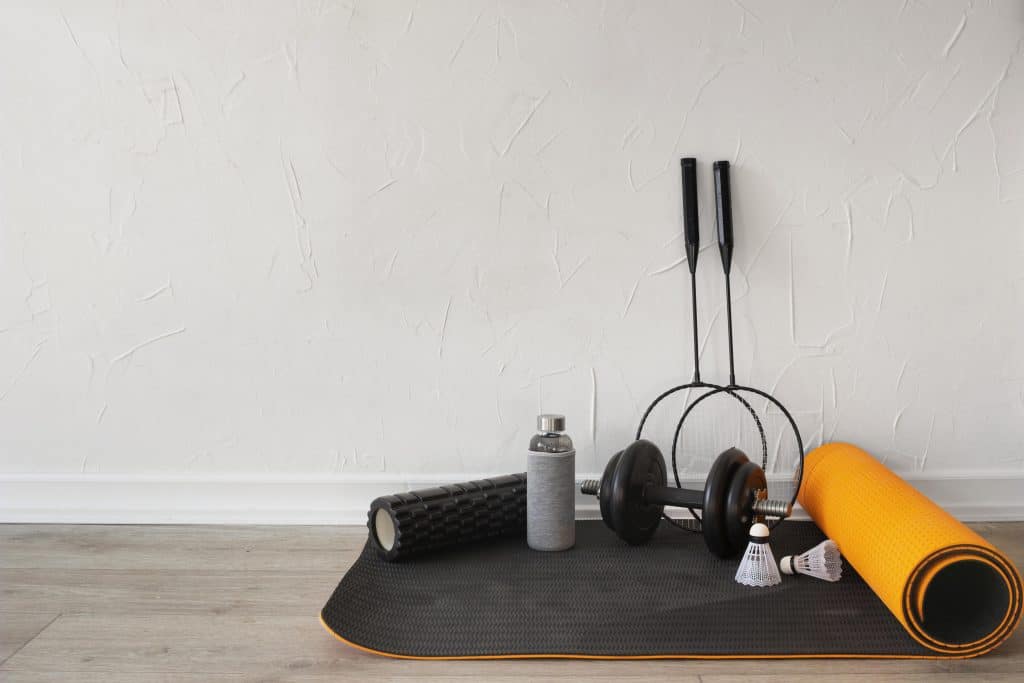Contents
- 1 Tips for Choosing the Right Basement Paint Colours
- 2 Transforming Basements with the Best Wall Colours
- 3 Brightening a Dark Basement with Color Choices
- 4 The Impact of White and Off-White Shades on Basements
- 5 Colourful Options for Basement Walls
- 6 Accent Walls to Add Depth and Interest
- 7 Selecting Paint Colours for a Cohesive Home Palette
- 8 Top Paint Picks from Renowned Brands for Basements
- 9 Factors to Consider for Basement Color Schemes
- 10 Conclusion
- 11 Basement Paint Colours FAQ
Selecting the right basement paint colours can transform a subterranean space from an overlooked storage area to a vibrant part of your home. The choice of colour is pivotal in enhancing the limited light and can influence the perception of space within these lower levels.
With careful consideration, homeowners can create a welcoming atmosphere that defies the typical basement stereotype. A palette that maximizes brightness and warmth not only adds aesthetic appeal but also improves functionality, turning basements into lively game rooms, cozy family dens, or efficient home offices. It’s essential to consider how different hues will interact with artificial lighting and furnishings to establish the desired ambiance.
Tips for Choosing the Right Basement Paint Colours
In basements, natural light is often scarce. Always choose colours that brighten the space. It’s a rule. Lighter shades can make a basement feel more open and airy. Reflective hues bounce artificial lighting to enhance visibility.
For dimly lit areas, consider:
- Pale yellows;
- Soft whites;
- Light grays.
These tones help counteract the lack of sunlight. They create an illusion of a brighter space.
Paint finishes
The right finish affects both durability and appearance in your basement. High-moisture areas benefit from semi-gloss or gloss finishes as they resist mold and are easy to clean.
Flat or matte finishes might hide imperfections but aren’t ideal for high-traffic zones due to their porous nature. Satin finishes offer a middle ground with some sheen and easier maintenance than flat paints.
Colour psychology
Colours influence mood and perception, known as colour psychology. In basements, this becomes particularly important due to limited exposure to natural elements.
Consider these effects:
- Blues evoke calmness;
- Greens symbolize nature and relaxation;
- Warm tones like reds energize spaces but may overwhelm them in large doses.
Selecting basement paint colours should align with how you intend to use the area — whether it’s a cozy family room or an energetic playroom.
Transforming Basements with the Best Wall Colours
Neutral shades have a profound impact on a basement’s ambiance. These hues, ranging from white to beige, can make spaces feel larger and more open. In basements, which often lack natural light, neutral colours reflect artificial lighting effectively. This creates an illusion of spaciousness.
Using neutral tones also offers flexibility in decor changes without needing a repaint. For example, adding colourful art against a soft gray wall can refresh the room without overwhelming it. Neutrals serve as the perfect backdrop for various design styles — from modern minimalism to rustic charm.
Bold statements
The use of bold colours can significantly invigorate basement rooms, infusing them with a sense of energy and vitality. These colours are transformative by nature, capable of metamorphosing bland, unremarkable areas into dynamic spaces brimming with life.
For instance, deep blues or vibrant greens not only anchor the space but also imbue it with a unique character and identity. However, it’s crucial to bear in mind that bold colours demand careful thought and planning due to their intense visual impact.
For example, a feature wall painted in rich burgundy could stimulate creativity in a basement office nook. At the same time, it’s important to maintain an aesthetic equilibrium by complementing this bold colour with lighter tones on the surrounding walls.
Balance in all colours
This balance helps prevent the room from becoming visually overwhelming or claustrophobic. In terms of advantages, bold colours add a sense of vibrancy and depth to the basement space. They create distinctive focal points that draw the eye and make certain features or areas stand out.
On the flip side, one of the potential disadvantages is that these intense colours can overwhelm smaller spaces if overused or applied without proper consideration. Strategic use of these shades can greatly enhance finished basements.
They can help define distinct zones within the space, such as a lounge area, workout zone, or craft corner. Moreover, they can create specific themes or moods within these zones — think a tranquil blue for a relaxation area or an energizing yellow for a playroom. This strategic use of colour not only makes the space visually appealing but also ensures it serves its intended purpose effectively.
Brightening a Dark Basement with Color Choices
Light-reflective colours play a pivotal role in brightening dark basements. Opting for hues that bounce back light can transform a dim area into one that feels more open and airy. White is an obvious go-to colour due to its high reflectivity, but it’s not the only option.
Pale shades of yellow, which evoke sunlight, or soft tones of blue with blue undertones are great choices. These colours mimic the sky and have a natural quality of making spaces seem more significant than they are. In low-light conditions, such as those found in many basements, these lighter tints can make all the difference.
Contrasting dynamics
Contrast is another tool to consider when selecting basement paint colours. It adds visual interest and depth to your space without sacrificing brightness. A darker shade can serve as an accent wall against lighter surroundings.
For example, navy blue or charcoal gray could be used sparingly alongside predominantly lightroom settings. This technique helps break up monotony while still keeping the overall feel of the room bright and welcoming.
Complementary combos
The influence of colour combinations on perceived brightness cannot be overstated. Pairing certain shades together amplifies their impact on lighting within a space.
A combination of pale green with green undertones next to violet with violet undertones creates a subtle interplay that enhances illumination from warm light sources like lamps or candles. The right mix will balance out natural light during the daytime while maintaining coziness after sunset.
The Impact of White and Off-White Shades on Basements
Basement areas often lack natural light, making them feel cramped. White paint is a strategic choice here. It reflects artificial lighting efficiently, creating an illusion of space. This visual trickery can transform a tight basement into one that feels more open.

A small room painted white seems larger. This effect is due to the colour’s high reflectivity. Light bounces off walls and travels further, reducing shadows that might otherwise shrink the perception of space.
Versatile design
Off-white shades bring versatility to interior design styles in basements. They serve as a backdrop for various decor themes, from minimalist to rustic charm. These tones blend seamlessly with other colours or stand out against bold accents.
For instance, pairing off-white with navy blue creates a nautical theme without overpowering the space. Furniture and decorations can shift over tim,e while the foundational off-white remains relevant and adaptable.
Lighting enhancement
The right shade impacts basement lighting significantly. White and off-white hues amplify available light sources, contributing to a brighter environment below ground level where windows may be scarce or non-existent.
In spaces relying on lamps or overhead fixtures, these colours ensure maximum luminosity is achieved throughout the area — essential for activities needing good visibility like reading or crafting.
Colourful Options for Basement Walls
According to a reputable basement waterproofing service in Toronto, basements need not adhere to traditional colour norms. Experimentation can unlock unique aesthetics. Homeowners may choose bold hues, like rich purples or deep blues, to infuse life into the space. Such colours contrast sharply with white or off-white shades discussed earlier.
Choosing unconventional colours makes a statement. A basement transformed with an emerald green or sunset orange creates a vibrant atmosphere. It has become more than just a storage area; it’s now a dynamic living space.
Vibrant impact
Vibrant colours influence energy levels in basements significantly. They can turn dull areas into lively environments suitable for activities and gatherings.
Imagine converting your basement into a playroom painted in bright yellows and reds. These tones stimulate excitement and creativity,which are ideal for spaces where children will spend time playing and learning.
Harmonious palettes
A harmonious colour palette ensures visual flow throughout the basement area. This approach involves selecting shades that complement each other and create balance within the room’s design elements.
For instance, pairing cool blues with soft grays can evoke tranquillity in a home office setup within the basement. Consistency in colour choices promotes cohesion across various functional zones of this versatile space.
WillFix suggests experimenting with different patterns alongside color choices. Patterns add depth to walls and enhance overall aesthetics without overwhelming the senses.
Accent Walls to Add Depth and Interest
Accent walls, when placed strategically, can transform the perception of a basement’s depth. Selecting an accent colour for one wall can create a sense of dimension in otherwise flat spaces. This is particularly effective in long or narrow rooms where you want to draw the eye forward.
An accent wall at the far end of a room makes it appear closer, adding coziness. Conversely, painting an accent wall on the side can make a space feel wider. It’s not just about choosing any hue; it’s about finding the right shade that complements your main walls and overall design theme.
Colour impact
The influence of colour choice on accent walls cannot be overstated; it defines their effect on your basement’s ambiance. A bold hue might inspire creativity or set an energetic mood, while lighter shades foster relaxation and calmness.
Colours have psychological effects too — greens are said to help concentration which could be great for home offices whereas yellows offer cheerfulness suitable for playrooms or creative spaces. Remember though: balance is key as too much intensity might shrink perceived space instead of enhancing it.
Choosing paint costs less than other remodeling projects but offers significant visual change — a wise way to revamp without breaking the bank.
Selecting Paint Colours for a Cohesive Home Palette
Maintaining colour flow is crucial in creating a cohesive home environment. It ensures that transitions between rooms are seamless and pleasing to the eye. When selecting basement paint colours, one must consider how these hues will interact with the rest of the home’s palette. A disjointed colour scheme can disrupt the overall aesthetic, making spaces feel isolated rather than part of a unified design.
Choosing paint colours that complement existing ones creates harmony. For example, if your living room features soft blues, carrying a similar shade or related neutral into your basement can enhance continuity. This approach doesn’t mean all rooms should match exactly but should instead resonate with each other through tone or temperature.
Basement integration
When tying basement colours into your home’s palette, look at areas like hallways or staircases leading down to this space. These transition zones offer clues on which direction to take with new paint choices.
To integrate effectively:
- Use shades from common areas as inspiration;
- Consider lighter hues if natural light is scarce;
- Opt for beautiful neutrals that adapt easily to various decors and purposes, such as home offices.
For instance, using a lighter version of your dining room’s warm taupe in the basement maintains connectivity without feeling repetitive.
Top Paint Picks from Renowned Brands for Basements
Basement environments demand special paint qualities. Moisture resistance and durability are crucial. Top brands have developed paints that cater to these needs.
Selecting the right basement paint is a balance of aesthetics and function. The best choices resist mold and stand up to damp conditions. They also provide a smooth finish, hiding any imperfections in the concrete or drywall surfaces often found in basements.
Durability factor
In basements, the longevity of wall finishes matters greatly due to less natural light and higher humidity levels compared to other parts of a home.
The paints selected must withstand frequent cleaning without losing their lustre or colour depth. This makes high-quality options from reputable manufacturers worth the investment for homeowners looking to enhance their basements’ appeal and usability long-term.
Factors to Consider for Basement Color Schemes
When selecting basement paint colours, consider the basement’s role. A home gym may benefit from energizing hues like bright blues or greens. Conversely, a movie room requires darker shades for ambiance. For multipurpose areas, neutral tones offer flexibility.

Basements often lack natural light. Lighter colours can make small spaces feel larger and brighter. Mirrors and good lighting multiply this effect.
Conclusion
Selecting the ideal paint colours for a basement can transform an underutilized space into a vibrant and inviting area. The guidance provided herein offers homeowners the tools to brighten dark basements, create accent walls for depth, and ensure a cohesive palette that compliments the entire home.
Choices range from the impactful simplicity of white shades to bold, colourful options, all while considering essential factors like lighting and moisture. Renowned brands offer top picks that promise quality and durability, which are crucial for basement environments.
Basement Paint Colours FAQ
-
What should I do with shades for different rooms in the house?
To effectively design the different rooms in the house, take inspiration from the shades in the standard rooms, use lighter shades when there is a lack of natural light, and choose neutral colours for different interiors.
-
Are there any requirements for basement wall finish paints?
Basement wall paints must be durable and resistant to cleaning.
-
How does the choice of accent wall colour affect the atmosphere of the basement and people's psychological well-being?
The choice of accent wall colour affects the atmosphere of the basement and people's psychological state.
-
What colour schemes can make a basement a dynamic living space?
If you want to renovate your basement and give it some dynamic, use bold hues in your interior and it can turn the whole place into a bright and unusual room.
